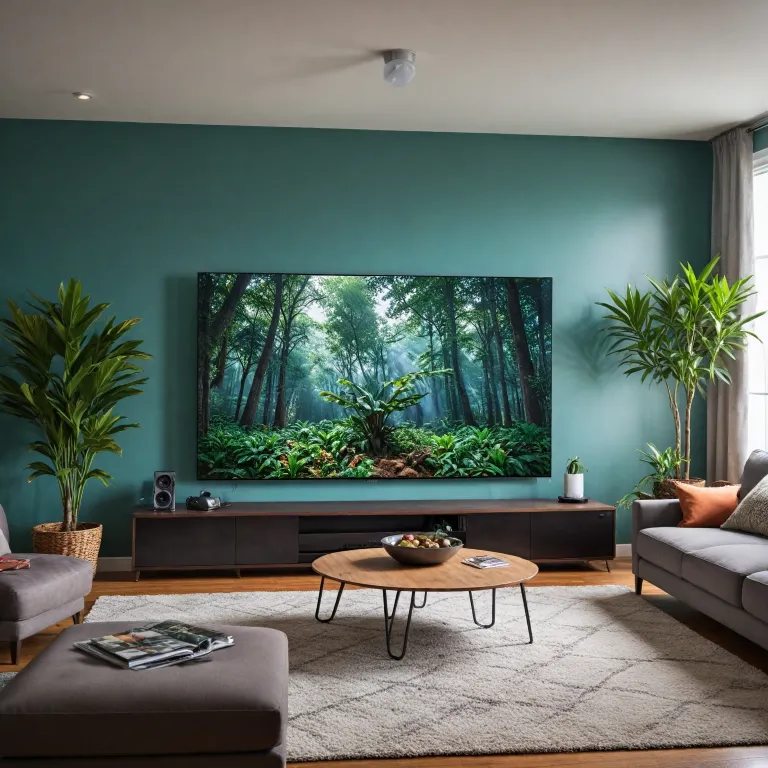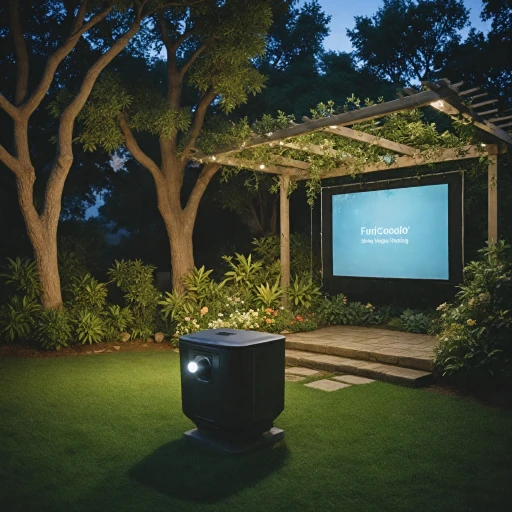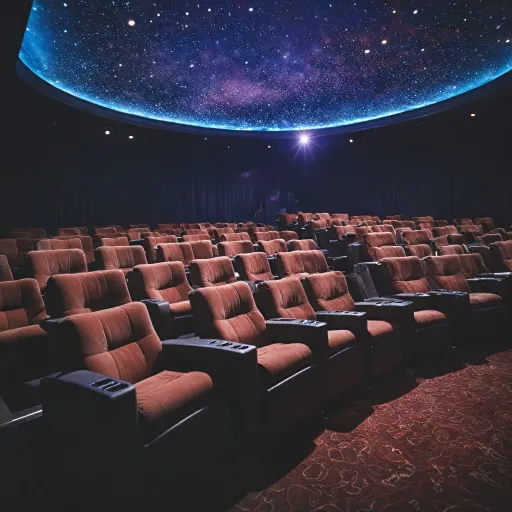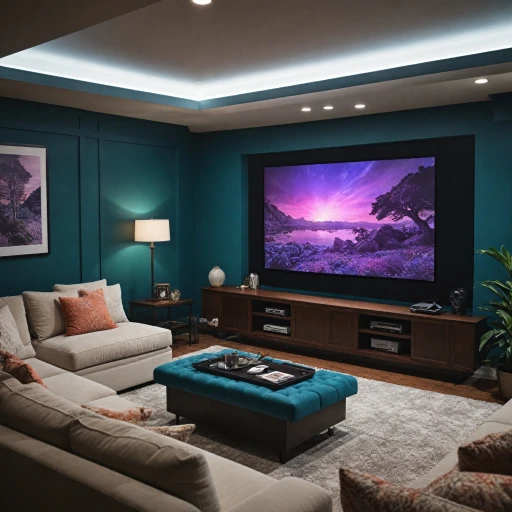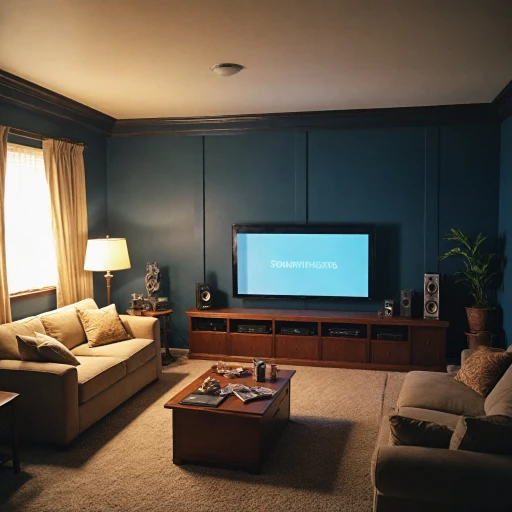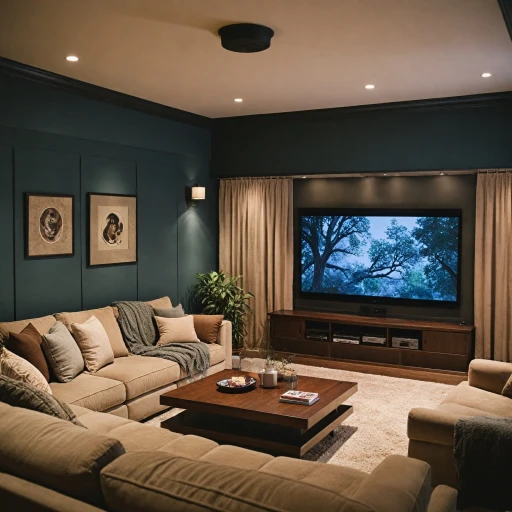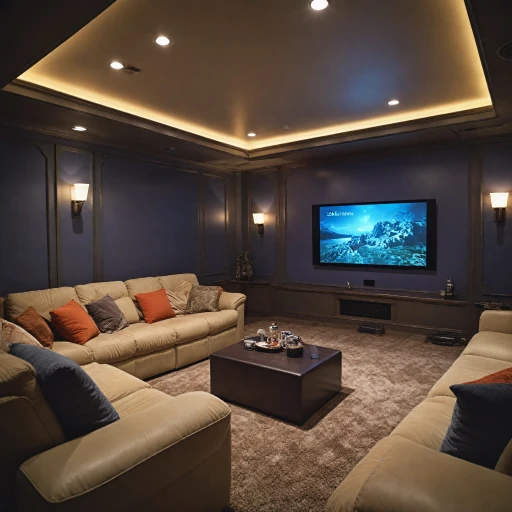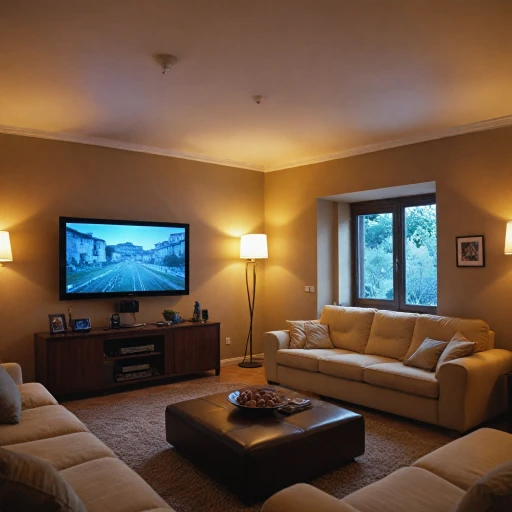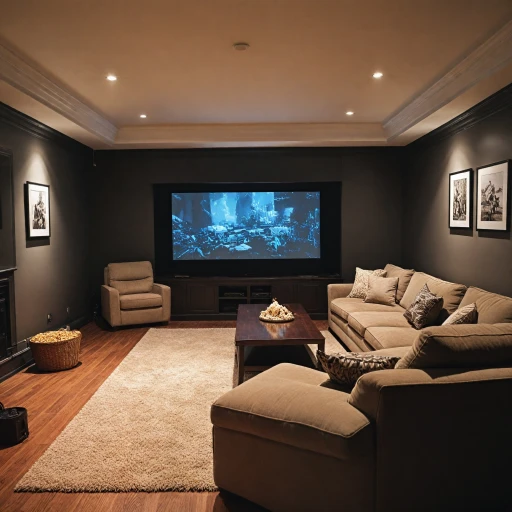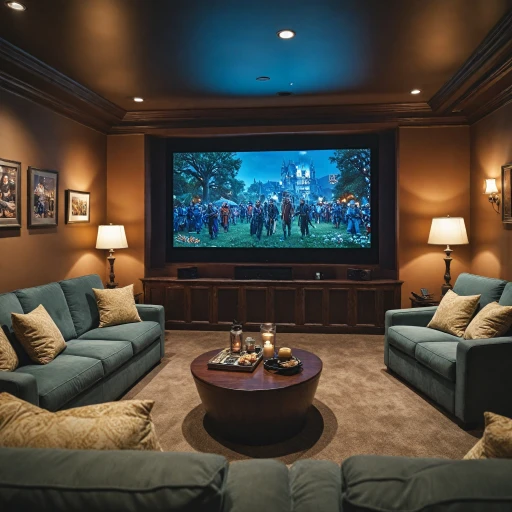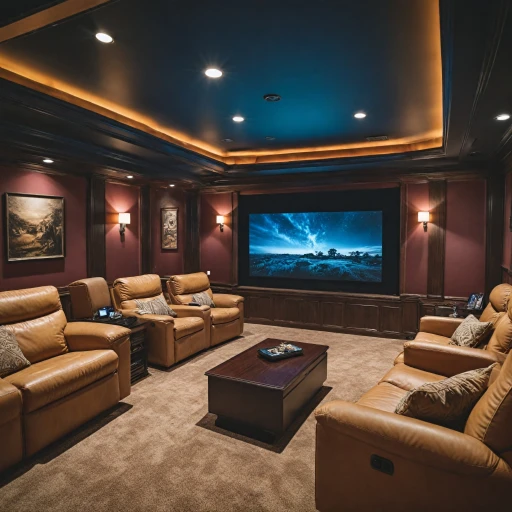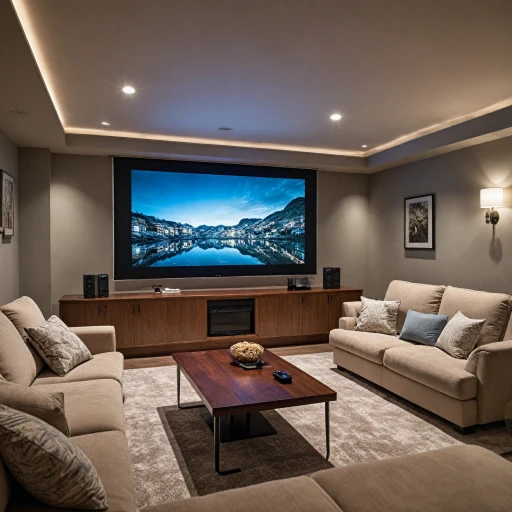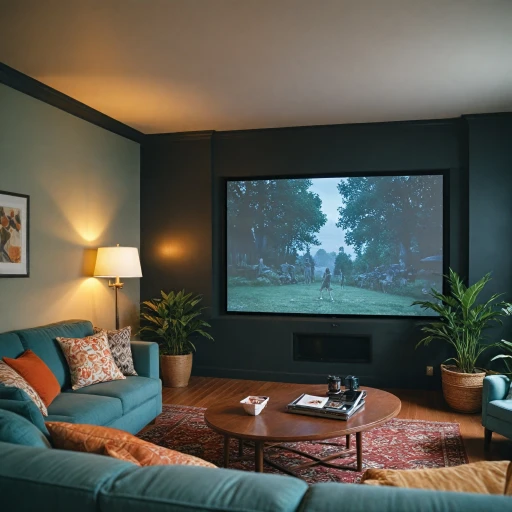
Understanding Screen Mirroring Technology
Decoding the Power of Wireless Screen Connectivity
In recent years, the concept of screen mirroring has become an essential feature for enhancing home theater setups. This technology allows you to mirror or "cast" your smartphone, tablet, or computer screen onto a larger display using a projector. Whether you're using an Android device or an iPhone, screen mirroring can significantly enrich your viewing experience by offering a clear, wireless display of your content.
To start with, one needs to understand how screen mirroring operates. At the core, it involves sending signals wirelessly from a device to a screen projector. Various protocols like Wi-Fi or Bluetooth are employed to establish a connection between the devices involved. Depending on the systems you're using, you may need specific applications such as a mirroring app to efficiently manage and control your displays. Systems like Android often have built-in options like "cast" features, while iPhones utilize AirPlay.
Additionally, most modern projectors come equipped with HDMI ports and wireless HDMI capabilities as standard, which simplifies the connectivity process. Still, some setups may require additional devices or third-party accessories to fully realize a seamless mirroring experience.
The ubiquity of this technology also means it's more accessible than ever. Many brands offer portable projectors that pack a lot of punch in a small package—perfect for those who want mobility without sacrificing quality. This convenience is particularly beneficial if you frequently project content from various locations, such as different rooms in your house or at outdoor movie nights.
For those interested in delving deeper into the intricacies and offerings of different projector models, exploring resources, such as the projector guide on specific models, could provide more insights.
Benefits of Using a Screen Mirroring Projector
Advantages of Integrating Screen Mirroring into Your Viewing Setup
Embarking on the journey to enhance your home theater experience with a screen mirroring projector can offer numerous perks. Here’s why integrating this technology is a game changer:- Seamless Connectivity: With screen mirroring technology, you can easily connect a wide range of devices, whether it’s your Android phone, iPhone, or even a tablet. This means no more fumbling with cables; simply use the wireless display feature via HDMI or mirroring apps to connect effortlessly.
- Enhanced Versatility: A screen mirroring projector allows you to access content from various apps, transforming your phone projector into a hub for streaming services, presentations, and even video chats. The flexibility offered by wireless screen options enhances the user experience substantially.
- Flexible Viewing Options: No longer confined to the limitations of your phone or smaller devices, you can project content onto a larger projector screen for immersive viewing. Whether you’re using a portable projector or a fixed setup, the ability to select the screen size that suits your preferences is invaluable.
- Enriching Media Sharing: Enjoy the ease of sharing photos, videos, and even presentations from your device to the big screen. Screen mirroring negates the need for tedious transfers and adaptations, offering a hassle-free transition from personal to shared viewing.
- Cross-Platform Compatibility: Most modern screen mirroring projects support a wide array of devices, whether you’re an Android device user or an iPhone enthusiast. This compatibility extends to third-party apps, making your setup adaptable and future-proof.
Choosing the Right Screen Mirroring Projector
Finding Your Ideal Projector for Optimal Experience
When choosing the right device, several crucial factors come into play. First, you'll need to consider compatibility. Different devices, like your phone projector or tablet, utilize a variety of operating systems such as Android or iOS. Ensure that your available options are compatible with your chosen mirroring app, whether you're using an android device or an iPhone projector. Think about resolution. Most projectors offer varying resolutions, from HD to 4K. If you're particular about the quality, look for models that support high-definition output to ensure a crisp and clear display. Next, identify your connectivity preferences. If avoiding additional cables is essential to you, select models with wireless screen options, which use Wi-Fi or Bluetooth to establish a seamless wireless HDMI connection. For those without a wireless display, an HDMI cable remains a reliable alternative. Portability is another essential consideration. If you plan on moving your setup frequently, or perhaps enjoying a movie outdoors in the United Kingdom’s picturesque landscapes, a portable projector could be your best bet. Budget is always a key factor. Screen projectors come in various price ranges, so consider what features are non-negotiable for you. Some may prioritize a higher-quality mirror screen function and be willing to pay a bit more, while others might seek budget-friendly options. Additional considerations include the device's brightness and contrast, which directly impact the viewing experience in different lighting conditions. Other factors like the availability of third-party apps and the overall ease of connectivity and setup of your selected projector should also be considered. For those seeking compact solutions, Exploring the Optoma ZW350ST: A Compact Solution for Home Theater Enthusiasts might offer insightful guidance. This option encapsulates a balance of functionality and form, making it a compelling choice for many.Setting Up Your Screen Mirroring Projector
Optimizing Your Setup for Optimal Viewing
Setting up a screen mirroring projector effectively can transform your home theater into a cinematic paradise. To start, make sure you have all necessary devices ready, such as the projector, your smartphone (Android or iPhone), or any other source device you plan to connect. A stable wireless network is also crucial if you opt for wireless screen mirroring. Firstly, decide whether you will use a wireless or wired connection. For a wireless setup, your projector should support Wi-Fi or have a wireless HDMI capability. If using a wired connection, you will need an HDMI cable. Connect it from your screen mirroring device, like a laptop or DVD player, to the HDMI port on the projector. Next, ensure that both devices—the projector and your screen mirroring source (such as an Android phone or iPhone)—are connected to the same Wi-Fi network. This synchronous connection is necessary for the wireless display to function smoothly without interruptions.Utilizing Mirroring Apps and Device Settings
For Android users, start by selecting the "Screen Mirror" or "Cast" option in your device settings. The precise terminology may vary between different Android devices, but the functionality is generally labeled clearly. For iPhone projectors, Apple’s AirPlay is the proprietary method for mirroring and is often pre-installed. Some projectors have a dedicated app for screen mirroring, which can offer additional features and settings. Explore the app store for the manufacturer's application or those recommended for your projector model.Arranging the Physical Space
Select a suitable location for your projector for an optimal viewing angle. If it's a portable projector, its compact design allows for flexible positioning, but ensure it is stable on a flat surface. The projector screen or wall should be directly aligned with the projector’s lens to avoid any distortion in the image display. Finally, adjust the projector's settings, like focus and keystone correction, for the best visual clarity. These settings may need minor tweaks depending on the environment, especially if the projector is moved frequently or used in different lighting conditions. By ensuring each step of the setup is fine-tuned, you'll enhance your viewing experience, enjoying seamless mirroring capabilities with vivid visuals and minimal disruptions. If challenges arise during the setup, refer to the common issues and troubleshooting tips discussed in other parts of your research.Troubleshooting Common Issues
Addressing Frequent Problems with Your Projector Setup
Screen mirroring projectors are known for their convenience, but like any technology, they sometimes present hurdles. Here’s how to tackle common issues to ensure a seamless viewing experience.
Connectivity Hiccups
One of the most prevalent issues is establishing a stable connection between your device and the projector. Ensure your devices and projector are connected to the same wireless network. For wired connections, verify that your HDMI cable is properly plugged into both the projector and the source device. If you're using a wireless screen mirroring method, make sure the mirroring app is up to date and that your phone or tablet is compatible with the projector's mirroring specifications.
Screen isn’t Displaying Properly
If your screen isn't mirroring correctly, first check your settings. On an Android device, navigate to the settings, select "Display," then "Cast" to ensure it mirrors to the right projector. For an iPhone projector setup, swipe up to open the control center, and select "Screen Mirroring" to connect to your wireless display. Furthermore, confirm that your projector screen is well-calibrated and correctly aligned.
Image Quality Issues
Should you notice poor image quality, check if your projector's lens is clean. A dusty or smudged lens can significantly affect the display. Additionally, check the source device's display resolution settings to ensure they match the capability of your screen projector.
Sound Problems
Ensure your mirroring projector is set to the correct audio output mode. For wireless HDMI solutions, the audio might default to the connecting device instead of the projector. Adjust this in the settings of your android phone or the connected media to play sound through the correct channel.
Software and Firmware
Always keep your projector and connected devices updated with the latest software and firmware. This not only enhances performance but also resolves known bugs and compatibility issues with new devices and apps. Utilize the manufacturer's official resources for these updates.
By addressing these frequent issues, you can maintain optimal function and enjoyment from your screen mirroring setup, and stay ahead of any potential disruptions during your viewing sessions.
